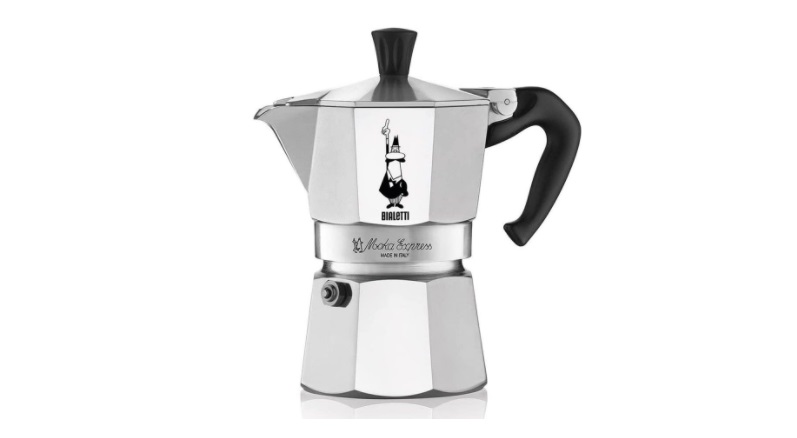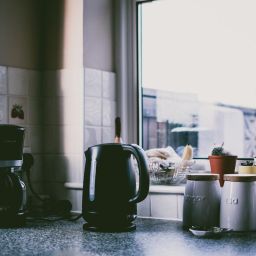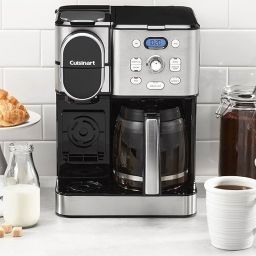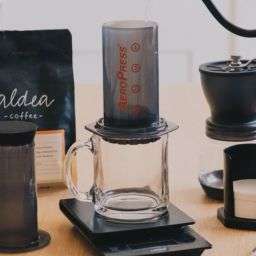
Non-electric drip coffee makers captivate with their simplicity and effectiveness, appealing to those who appreciate the art of coffee making without the need for modern technology. These devices offer a hands-on approach to brewing, allowing full control over the extraction process and a deep connection to the coffee brewing tradition.
Historically, non-electric coffee brewing dates back long before the advent of electricity, with methods like the French press and pour-over which have evolved over centuries. Originally, these methods were developed out of necessity but have become beloved for their robust flavors and artisanal virtues.
Key Takeaways
- Eco-Friendly and Energy Efficient Non-electric coffee makers stand out for their minimal environmental impact. They require no electricity, thus conserving energy and offering a sustainable option for coffee enthusiasts.
- Enhanced Flavor Profiles These brewers excel in flavor extraction, providing a richer and more complex cup of coffee. The slow brewing process allows for optimal extraction of coffee oils and aromas, which can be lost in quicker, electric brewing methods.
- Ideal for On-the-Go Lifestyles With no need for power, non-electric coffee makers are perfect for outdoor activities like camping or hiking, as well as for travel. They’re lightweight, compact, and easy to pack, making them an excellent companion for any adventure.
- Cost-Effective Over Time Investing in a non-electric coffee maker is often cost-effective, as these devices are typically less expensive than their electric counterparts and do not incur additional energy costs. Their durability and low maintenance needs also contribute to long-term savings.
Popular Models and Brands
When exploring the world of non-electric drip coffee makers, three standout models are often celebrated for their unique brewing capabilities: the Chemex, AeroPress, and French press. Each offers a distinct approach to coffee making that caters to different preferences and lifestyles.
Chemex is renowned for its elegant design and pure brewing technique. It uses special paper filters that are thicker than average, which allows for a cleaner cup of coffee with less bitterness and sediment. Its hourglass shape not only makes it a stylish countertop piece but also enhances the clarity and purity of the coffee.
AeroPress is a newer addition compared to the others but has quickly gained a cult following due to its versatility and efficiency. It uses air pressure to push hot water through coffee grounds, producing a smooth and strong espresso-like coffee. It’s compact and durable, making it ideal for travelers or office workers who want a quick, barista-quality brew.
French press, also known as a press pot, offers a robust and deeply flavorful coffee experience. It allows the coffee oils and fine particles to remain in the final cup, which produces a richer taste. This method involves steeping coarse coffee grounds in hot water before pressing them down with a metal or plastic plunger, trapping the grounds at the bottom.
Materials and Design
The materials used in non-electric coffee makers significantly affect both the taste of the coffee and the overall user experience. Glass, metal, and plastic are the most common materials, each bringing its own benefits and influences on the coffee’s flavor.
Glass brewers like the Chemex offer a pure taste, as glass does not impart any flavors to the coffee. However, they require careful handling due to their fragility. Metal options, such as some French presses, are durable and retain heat well, making them great for keeping coffee warm; however, they can sometimes impart a metallic taste if not well-coated or if the coating wears off. Plastic brewers are lightweight and durable, ideal for travel, though the quality of plastic can vary, with some cheaper plastics potentially affecting the taste and health safety of the brew.
Step-by-Step Brewing Guide
Brewing coffee with a non-electric drip coffee maker is both an art and a simple pleasure. Here’s a concise guide to get you started on your journey to a perfect cup:
- Preheat and Prepare: Begin by boiling water in a kettle. While waiting, place your coffee filter in the brewer. If using a Chemex or a similar device, rinse the filter with hot water to remove paper residue and preheat the brewer. This also helps seal the filter.
- Measure and Grind: Measure about one tablespoon of coffee beans per cup of water. Grind the beans to a medium-coarse consistency, similar to sea salt. This is ideal for allowing water to properly extract the coffee flavors without passing through too quickly.
- Bloom the Coffee: Pour a small amount of hot water (just off the boil) over the grounds to saturate them fully. Allow this to sit for about 30 seconds. This step, known as blooming, releases any excess carbon dioxide and ensures a more even brew.
- Pour and Brew: Continue pouring the water slowly over the coffee grounds in a circular motion. Aim to keep the water level well above the grounds to ensure an even extraction. Depending on the amount, this process should take about 3 to 4 minutes.
- Serve and Enjoy: Once the brew is complete, remove the filter and serve the coffee. Enjoy the freshly brewed cup as is, or add your favorite accompaniments like milk, sugar, or cream.
Maintenance and Care Tips
Maintaining non-electric coffee makers is straightforward but crucial for extending their life and ensuring the best coffee flavor:
- Clean After Each Use: Rinse the brewer with hot water after each use to remove coffee oils and residue. For brewers like the French press, disassemble the parts and rinse them thoroughly.
- Deep Cleaning: Once a week, clean more thoroughly. Glass and metal parts can be cleaned with warm, soapy water. Avoid harsh detergents on metal to prevent flavors from being altered. Plastic components should be handled gently to avoid scratches that can harbor residue and bacteria.
- Descale Regularly: Depending on your water hardness, scale buildup can occur. Use a natural descaling solution like a mixture of water and vinegar to soak the brewer components once a month. Rinse thoroughly afterward to remove any vinegar taste.
- Dry Completely: After washing, ensure all parts are completely dry before reassembling to prevent mold or bacterial growth.
Essential Accessories
To enhance your brewing experience with non-electric drip coffee makers, consider investing in a few key accessories:
- Grinders: A good quality burr grinder is essential for grinding your coffee beans to the right consistency. Uniformly ground beans ensure even extraction and a better-tasting brew.
- Filters: Choose high-quality filters that suit your brewer. Paper filters are great for Chemex and other pour-overs, capturing oils and fine sediments. Metal filters allow more oils through, which can add richness to your coffee.
- Kettles: A gooseneck kettle offers precise control over pouring speed and water distribution, crucial for perfecting the pour-over technique.
DIY and Customization Ideas
Personalizing your coffee setup can make brewing more enjoyable and tailored to your taste. Here are some tips:
- Custom Stands: Build or repurpose a stand to hold your pour-over device over your cup or carafe. Use materials like wood for a rustic look or metal for a sleeker design.
- Artistic Flair: Decorate your coffee station with custom labels or painted designs. Use non-toxic materials to maintain safety.
- Storage Solutions: Create a dedicated space for your coffee supplies. Wall-mounted shelves or drawers with dividers can keep everything organized and easily accessible.
FAQs
How often should I replace my coffee maker’s filter? Paper filters are single-use. Reusable filters (metal or cloth) should be washed after each use and replaced when they show wear or affect the taste.
Can non-electric coffee makers make espresso? While they can’t produce true espresso (which requires pressure), devices like the AeroPress can make a strong, espresso-like coffee.
What is the best way to clean a non-electric coffee maker? Rinse after each use and perform a deep clean with a natural descaler like vinegar and water solution monthly.
Final Thoughts
Non-electric drip coffee makers offer a unique combination of simplicity, tradition, and control, allowing you to craft a personal and deliberate coffee experience. They’re eco-friendly, portable, and can produce exceptionally good coffee. Whether you’re a seasoned aficionado or a curious beginner, experimenting with different models and accessories can help you discover your perfect coffee ritual.








